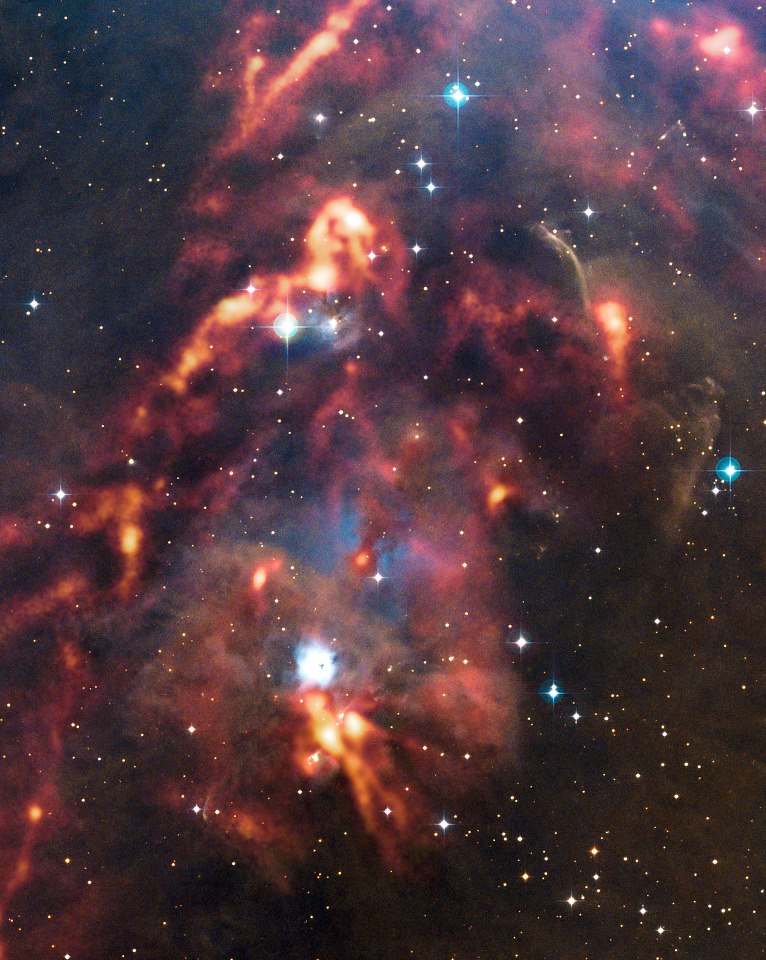

Peekaboo! APEX sees you!
In this newly-released image taken by the Atacama Pathfinder Experiment (APEX) telescope in Chile, high-mass stars twinkle beneath cosmic gas clouds in the Orion molecular cloud, some 1,600 light-years away.
Since light from the stars can not be seen in regions with obscuring dust clouds, astronomers must view the area at longer wavelengths. In this case, this area in the constellation of Orion is viewed in infrared (particularly in the submillimetre range), which is the orange portion of this image, laid over an image of the same area at optical wavelengths. It is at these wavelengths [infrared] that the faint heat glow of the dust particles give away the location of the stars buried deep in the nebula, as the dust grains shine instead of absorb photons traveling through the cloud to our telescopes.
The Orion Molecular Cloud remains one of the closest, most massive stellar-nurseries from our humble abode and it’s every bit as complex as it is beautiful. There are many massive, young stars, dark clouds of dust grains, several bright nebulae in addition to a wealth of separate elements, each corresponding to a certain color that can be found here, including the massive star known as V380 Orionis, which lurks in the heart of the nebula. Interestingly, this star is almost 3.5 times more massive than the sun and about twice as hot.
Here is an amazing up-close image of V380 Orionis, taken by Hubble:
http://
V380 Orionis is largely responsible for the formation of the bright patch of space formally designated as NGC 1999; a reflection nebula located in center of this image. The star furiously emits ultraviolet radiation, where the blue glow from the massive star reflects from the interstellar dust clouds, ultimately eating away at it, leaving behind a cavity in the nebula.
For Further Reading:
See a larger version of this image here.